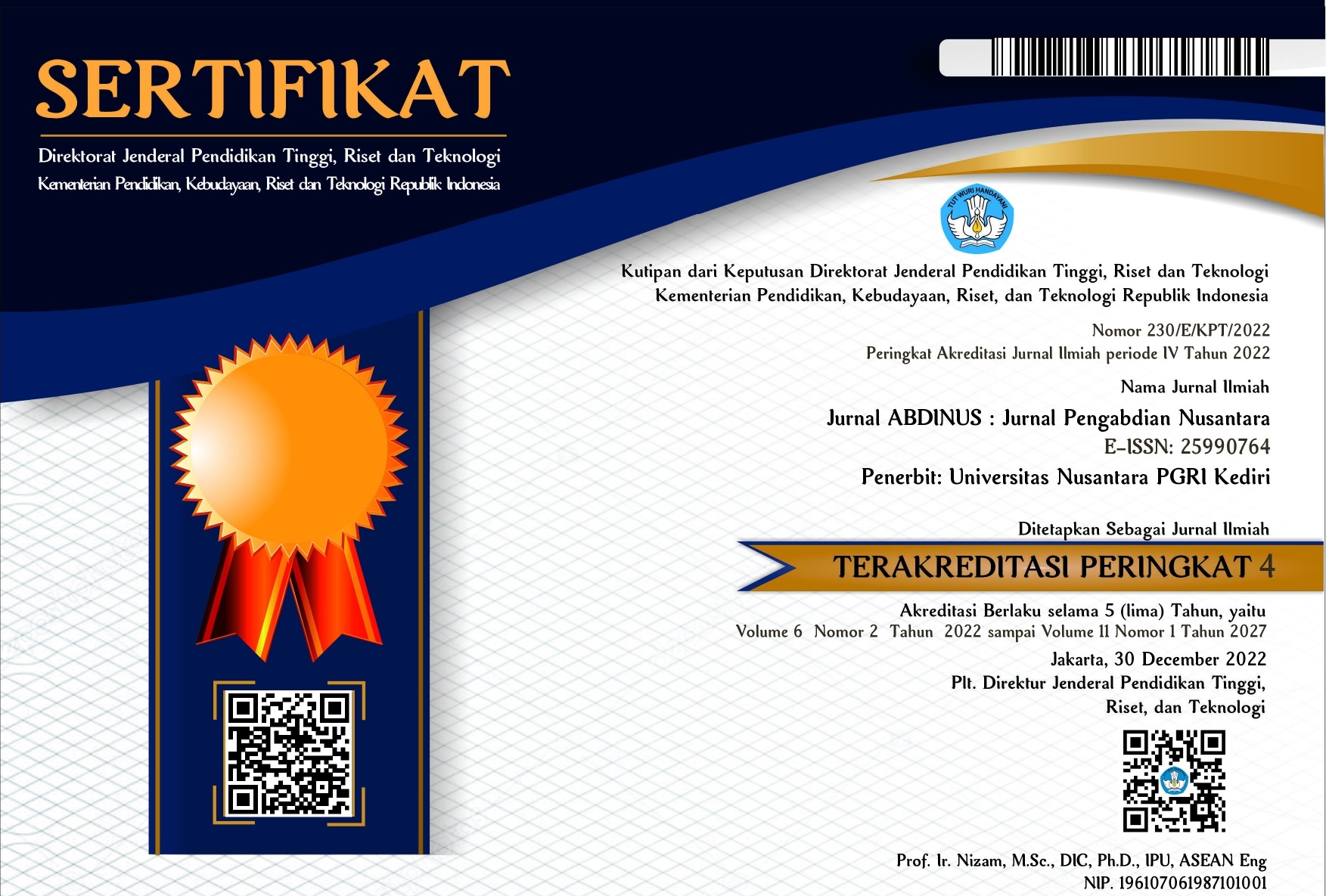POCITA: Mengenalkan Cita-Cita dan Lingkungan Sejak Dini
DOI:
https://doi.org/10.29407/ja.v3i2.13049Keywords:
Introduction of ideals, Environment, future.Abstract
The current phenomenon that happens is the lack of children's knowledge about their ideals, which in this modern times, it should be easy for them to obtain those information. This activity must be done so that children can plan their future better. The team conducted a number of methods starting from finding out how far the children knew their ideals, then proceeding to explain the ideals to the child, then seeing the development of the child about knowledge of dreams, after that the team reassured the ideals of each child, and the last to plant trees and depend on the ideals they have written. As a result, the children understood more about what the team had explained about their ideals and found that they could understand it better than before. There are children who initially have an unnatural ideal before and they turned to have a reasonable ideal right after.
Downloads
References
Arif, F. (2018). Cita-cita Hidup Bahagia Sebagai Tema Dalam Penciptaan Karya Seni Lukis. Jurnal Imajinasi Vol.XII No. 1, 38.
Danoebroto, S. W. (2015). Teori Belajar Konstruktivis Piaget dan Vygotsky. Indonesian Digital Journal of Mathematics and Education Volume 2 Nomor 3 Tahun 2015, 194.
Ibda, F. (2015). Perkembangan Kognitif Jean Piaget. Intelektualitas Volume 3, Nomor 1, Januari-Juni 2015, 33.















